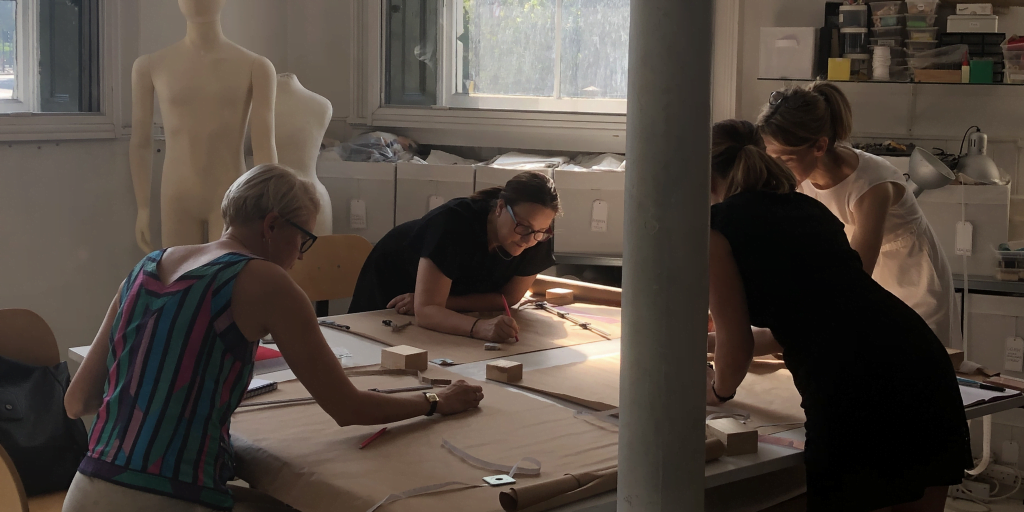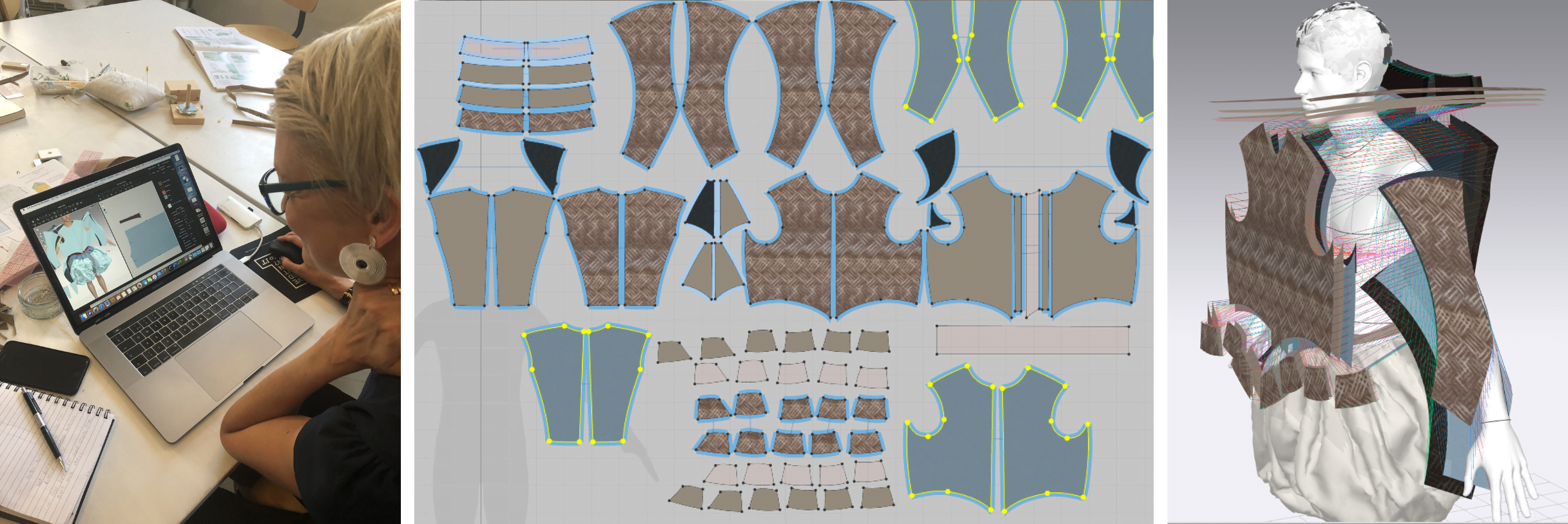Digital tailoring
The Refashioning project will show how material and digital reconstructions can be complementary, each enhancing our experience of the other, and helping historians and makers to communicate their archival, visual, and material research findings in new ways.
Doublets are named for their double or multiple layers, but once these upper-body garments are made it can be difficult to understand the complex construction and many materials used in their creation. Therefore, in addition to a material reconstruction, we are creating a digital 3D animation to show how the seventeenth-century Florentine waterseller Francesco Ristori’s doublet was cut, tailored, and worn on the body. We hope to make visible the complex tailoring used to create everyday renaissance fashions, and to share our reconstructions through digital platforms.
Using CLO-3D, and working with Aalto PhD candidate and costume designer Maarit Kalmakurki, the doublet animation will show how pattern pieces are cut out of cloth and stitched together to create an elegant silhouette. The animation will also illustrate how inner sculptural layers are placed within the doublet – these were often made of a combination of textiles (like stiffened linens or hair or wool quilting and padding) and non-textile materials (such as rabbit-skin glue, reeds, card, and baleen). Finally, the animation will reveal how the doublet is worn on the body, and attaches to hose by points and laces or hooks and eyes at the waist. The digital doublet will be created using exactly the same pattern as the material doublet, and the digital body’s dimensions will match our model. The animated model can show the doublet and hose in motion, offering a sense as to how the surface decoration and clothing silhouette moves and appears in different light conditions.
While our material reconstruction will be made by hand with as historically appropriate materials as possible, the digital reconstruction pushes the limits of the CLO-3D software by applying modern technology to historic materials, silhouettes, and bodies. Our material reconstruction will be on display in our forthcoming exhibition, and will be worn by a real model, but we hope that the digital reconstruction will be able to reach an even wider audience online. Moreover, the doublet animation will enable us to quickly and efficiently communicate how these complex garments are constructed and worn – two important stages in an object’s biography, and yet hard to convey through surviving objects and material reconstructions.



